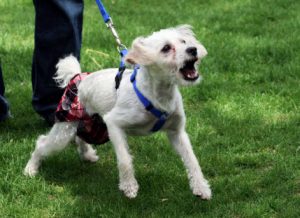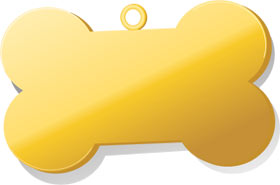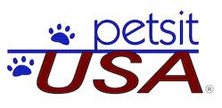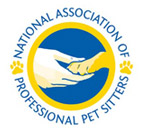A lot of people I know who own dogs are reluctant to take their dogs on walks because of aggressive behavior. If a dog isn’t trained to behave, he/she wouldn’t know that aggression is bad and can result in accidents or injury.
on walks because of aggressive behavior. If a dog isn’t trained to behave, he/she wouldn’t know that aggression is bad and can result in accidents or injury.
Training a dog to walk without aggressive reaction is easier than you think. For instance, I have a client with two dogs. They’re both male and middle age. One is more dominant than the other.
When I first started to walk them (they’re always walked together), one of them will see another dog and alert the other of the encroaching animal. When that happens, the dominant male will take the lead and begin to pull, and bark as though their lives are being threatened. His brother will then chime in and also begin to bark and pull. Then, without warning, they’ll get into a fight. After watching the routine a couple of times, I’ve concluded that the dominant dog decides his brother is preventing him from protecting the pack (the pack being, the three of us). It can get rather hairy if I don’t act quickly.
The first thing I do is to search for an area that blocks out the sight of the other dog. I can usually find a parked car or bushes nearby to separate us from the infringing animal. Once I’ve achieved blocking their view, my next goal is to calm them down.
Remember, they’re both excited. On a scale from 1 to 10, they’re both at an “8.” The goal is to get them down to a “3.” So, we immediately do a “time out.” This means, they are ordered to sit and to remain quiet. We don’t move until they’re completely relaxed. (Quite honestly, I don’t care how long it takes.) When they’re relaxed, I praise them both and give them a treat. We will then proceed with the walk.
Now when walking them, I always look for other dogs during our walk. When I see one, I will turn and go the other way, cross the street or move behind a car. I don’t wait until the dogs start reacting because it’s easier to avoid the problem and prevent the dogs from behaving reactively.
Consider, in a dog’s world, a dog that walks directly toward another dog is considered rude, or even a threat. However, we put our dogs in this position all the time by walking on sidewalks. Since a sidewalk path is narrow, a dog will feel extremely anxious if he sees another dog nearby.
The other thing to consider when walking a dog is to always remain calm. If you’re anxious, your dog will sense it. Don’t hold your dog’s leash too short and don’t pull back on the leash. If you do, your dog will naturally pull forward.
My doggy clients and I have been working on improving their behavior for several weeks. I now know what they consider a safe distance from the other dog. If they see the dog and begin to react, I immediately correct them and move them further away until they stop. When they stop reacting and calm down, they get a treat.
Another tactic I use is to make it into a game. In a happy voice I’ll say, “let’s run!” We will then begin to jog in the opposite direction. They think it’s a game and will immediately participate losing complete interest in the other dog.
My goal is to change the dogs’ association with other dogs from “that’s scary; I want it to go away” to “dogs make good things happen.” This will take time, but that’s OK. We’re having fun and getting good exercise during our walks in Nashville.

















Speak Your Mind